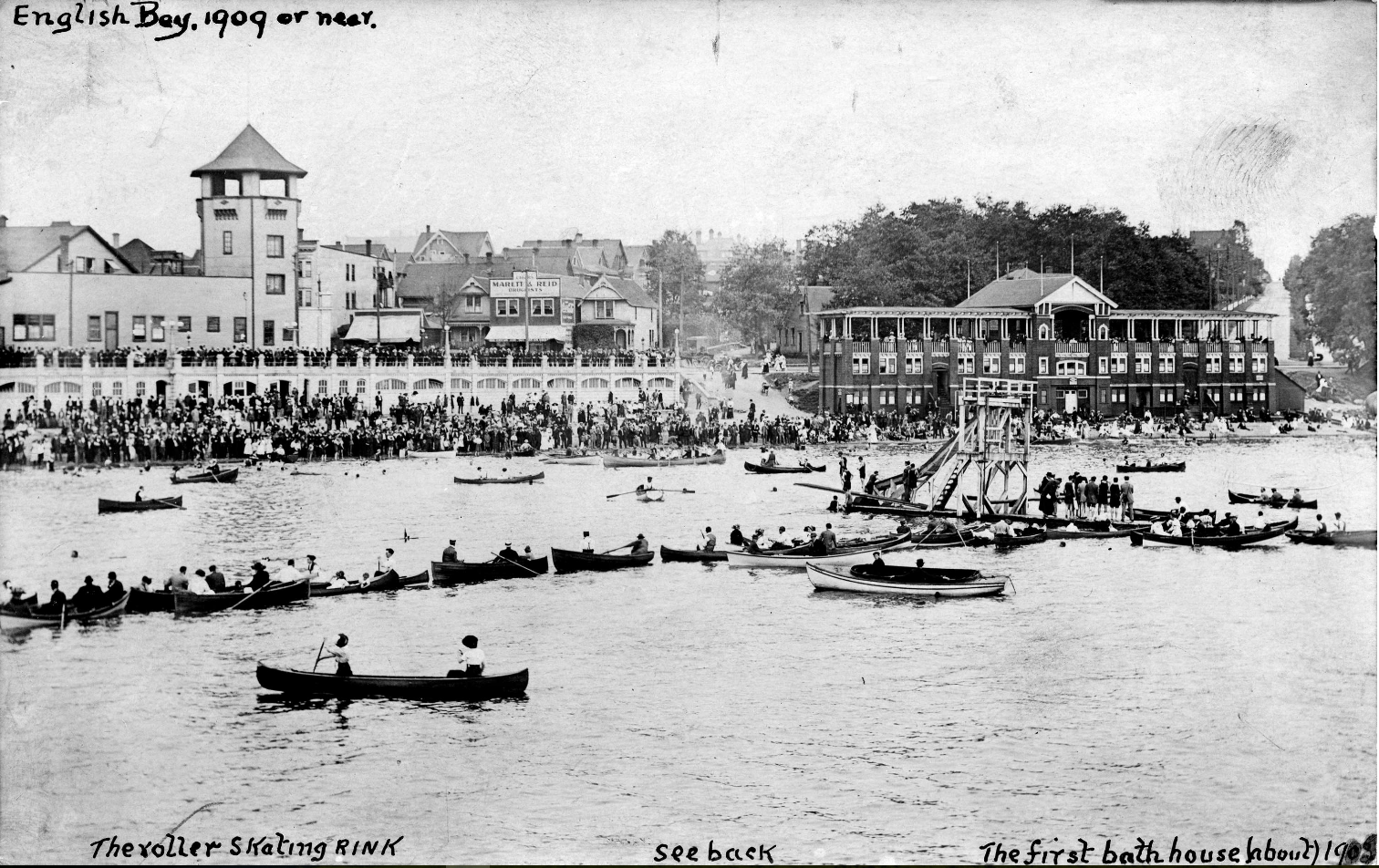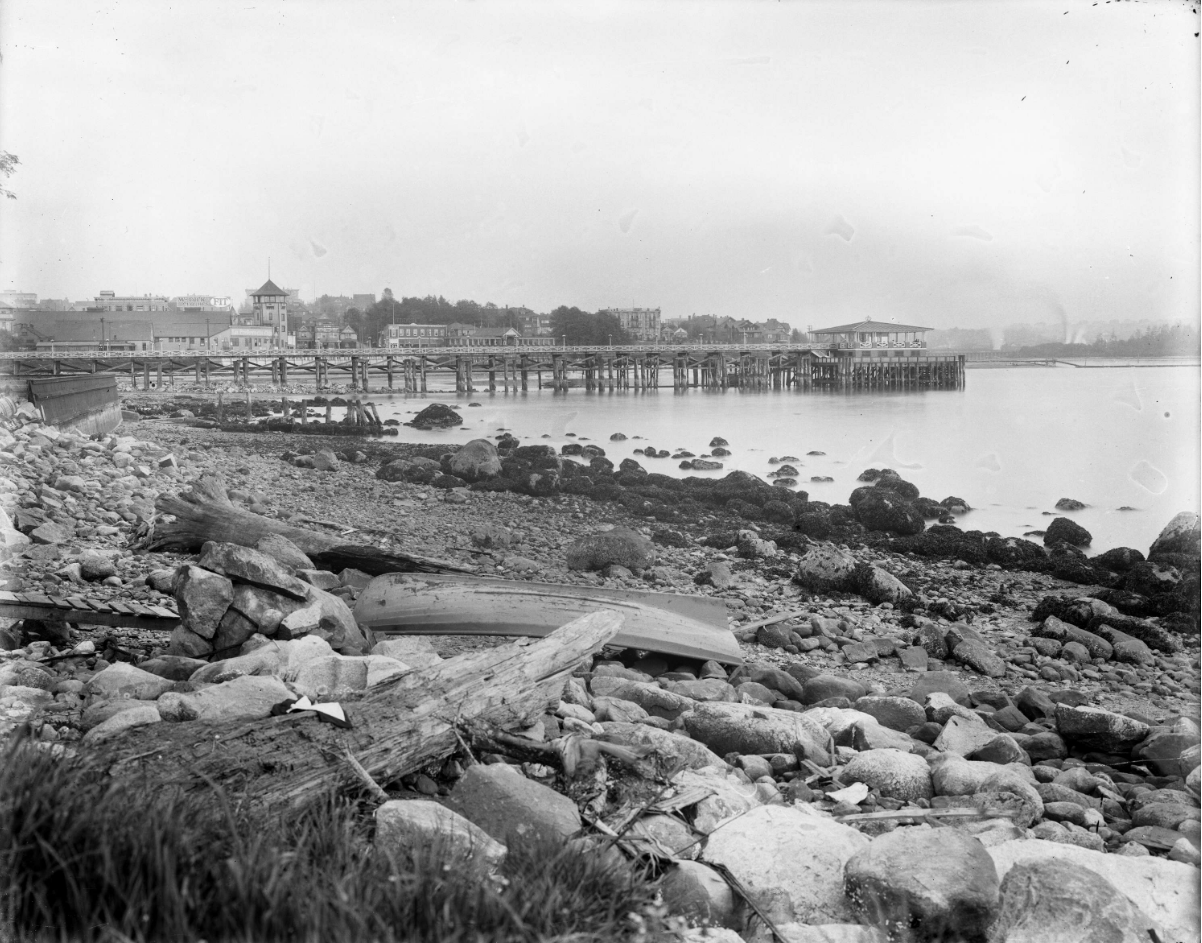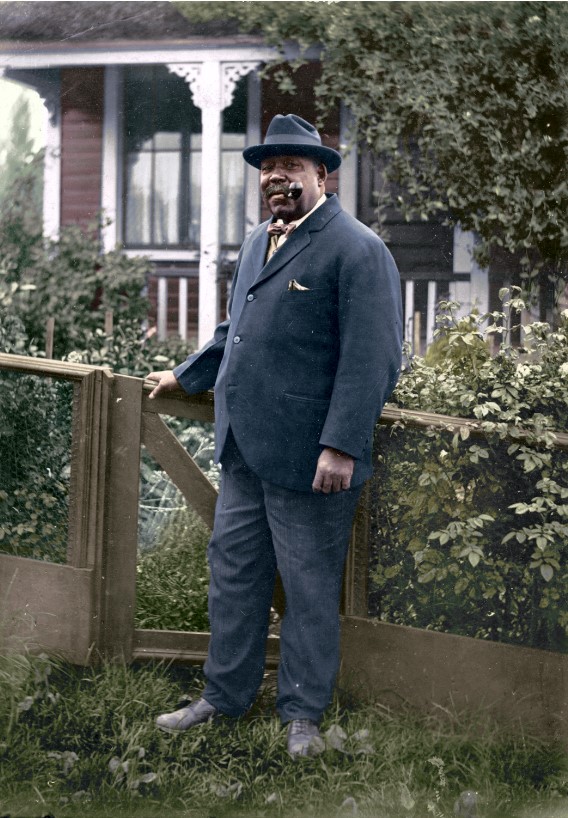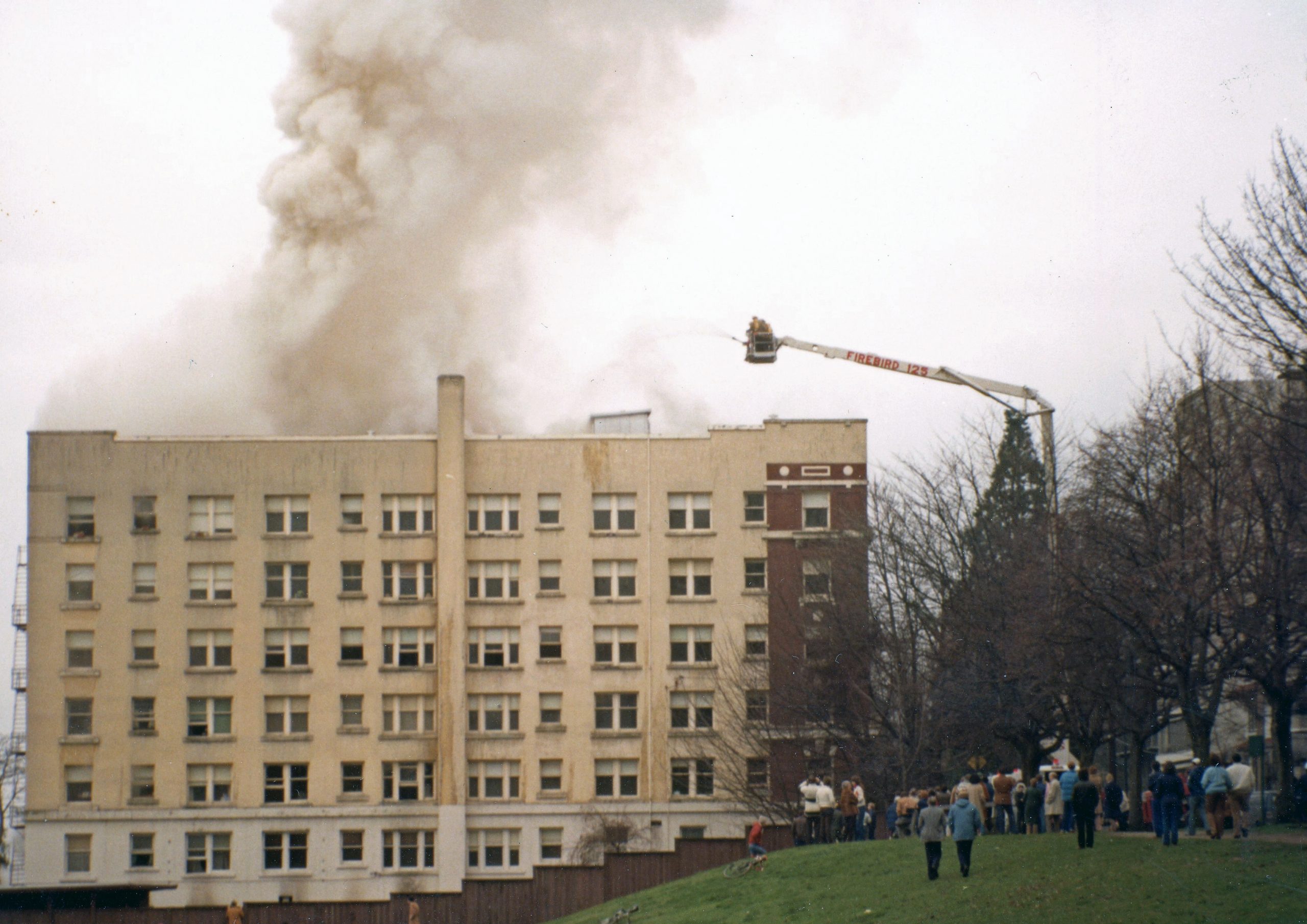The Imperial Roller Skating Rink opened in 1907 at English Bay and boasted the largest skating floor in North America.

Morton Park:
In 1907, more than 100 years before the famous laughing statues appeared at English Bay, the Imperial Roller Skating Rink opened in Morton Park at Denman and Davie Streets. Roller skating was surging in popularity and the rink was housed in a big wood framed building with a huge tower that looked out over Beach Avenue and boasted the “largest skating floor on the continent.”
From: Vancouver Exposed: Searching for the City’s Hidden History
In 1912 for instance, you could go skating at the Roller Rink and wander across the road, past the Englesea Lodge and out along the English Bay Pier. If you continued back along Beach Avenue, you’d pass Joe Forte’s home at the foot of Bidwell Street, and you’d find more than 30 houses ringing the water side of Beach Avenue.

Burned down in 1914:
What happened to all those amazing structures you ask? Well they either burned down or we pulled them down. The Roller Rink was the first to go—it burned in 1914. Joe Forte died in 1922 and his sweet little cottage was burned to the ground—the standard practice for demolition in the 1920s.

The English Bay Pier, considered an eyesore by many, was demolished in 1939. Following a plan to rid the shoreline of bricks and mortar, the City gradually purchased all of the houses, and by the 1950s Beach Avenue was bulldozed back to nature. The only hold-out was the Englesea Lodge, and arson took care of that problem in 1981.

A-maze-ing Laughter:
At least we get to keep the sculptures. They were designed by Yue Minjun and installed in 2009. Each of the 14 bronze statues stands over nine feet and weighs more than 500 pounds. They were installed as part of the Vancouver Biennale, a program that puts international art in public spaces for two years. The inscription that’s carved into the concrete reads “May this sculpture inspire laughter playfulness and joy in all who experience it.”
To give credit where it’s due, A-maze-ing Laughter is now a permanent exhibit because Chip Wilson forked over US$1.5 million to keep it here. And, just maybe because he can see it from his $67 million house across the water–still the pricest digs in British Columbia.
Copies of my new book, Beneath Dark Waters: The Legacy of the Empress of Ireland Shipwreck, are now available to preorder through my publisher Arsenal Pulp Press, from online retailers, and through independent bookstores across Canada
Related:
© All rights reserved. Unless otherwise indicated, all blog content copyright Eve Lazarus




6 comments on “The Imperial Roller Skating Rink and Other Missing Structures of Beach Avenue”
very interesting!
Was there another roller skating rink built in that area in = 1941 I seem to r emember roller skating at an arena when I was about 10 . I was born 1931
Great story very interesting,love Vancouver history
Love the history of Vancouver Eve. Locals have always loved the outdoors here. I wonder how law enforcement took to swim suits getting smaller and smaller with the arrival of bikinis. There is always a group of people who cant except change.
It seems to me that Vancouver and other places (like Coney Island) were much more interesting in the past (before globalization?). And ever since roller skating rinks went bust, I’ve been in mourning. What an enormously fun thing to do with friends or family every Friday and Saturday night.
Sad sad sad. I believe Joe s house was not burned down as two tiny cottages still stood across from Alexander Park on Bidwell on the lane. Do we have an address by chance? And I for one do not care for the art. its childish and they are all the same. Ugly.